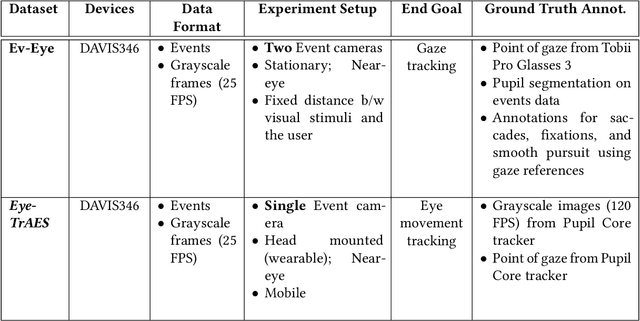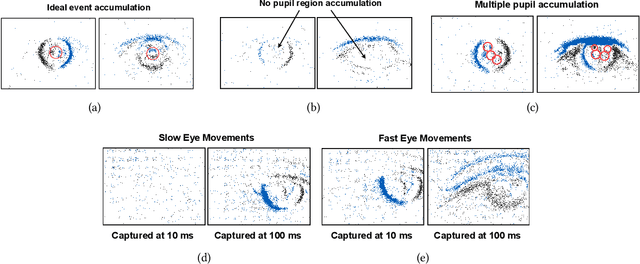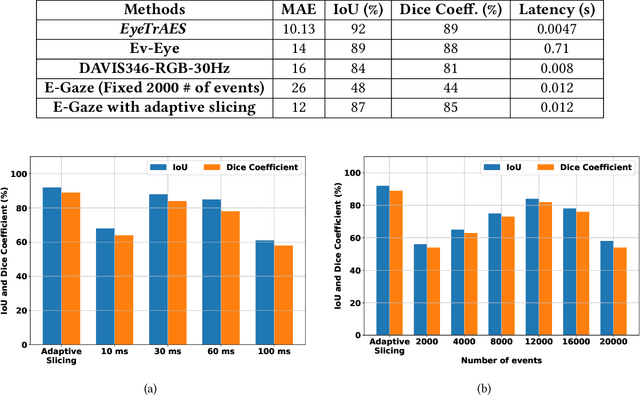Ila Gokarn
EyeTrAES: Fine-grained, Low-Latency Eye Tracking via Adaptive Event Slicing
Sep 27, 2024



Abstract:Eye-tracking technology has gained significant attention in recent years due to its wide range of applications in human-computer interaction, virtual and augmented reality, and wearable health. Traditional RGB camera-based eye-tracking systems often struggle with poor temporal resolution and computational constraints, limiting their effectiveness in capturing rapid eye movements. To address these limitations, we propose EyeTrAES, a novel approach using neuromorphic event cameras for high-fidelity tracking of natural pupillary movement that shows significant kinematic variance. One of EyeTrAES's highlights is the use of a novel adaptive windowing/slicing algorithm that ensures just the right amount of descriptive asynchronous event data accumulation within an event frame, across a wide range of eye movement patterns. EyeTrAES then applies lightweight image processing functions over accumulated event frames from just a single eye to perform pupil segmentation and tracking. We show that these methods boost pupil tracking fidelity by 6+%, achieving IoU~=92%, while incurring at least 3x lower latency than competing pure event-based eye tracking alternatives [38]. We additionally demonstrate that the microscopic pupillary motion captured by EyeTrAES exhibits distinctive variations across individuals and can thus serve as a biometric fingerprint. For robust user authentication, we train a lightweight per-user Random Forest classifier using a novel feature vector of short-term pupillary kinematics, comprising a sliding window of pupil (location, velocity, acceleration) triples. Experimental studies with two different datasets demonstrate that the EyeTrAES-based authentication technique can simultaneously achieve high authentication accuracy (~=0.82) and low processing latency (~=12ms), and significantly outperform multiple state-of-the-art competitive baselines.
 Add to Chrome
Add to Chrome Add to Firefox
Add to Firefox Add to Edge
Add to Edge